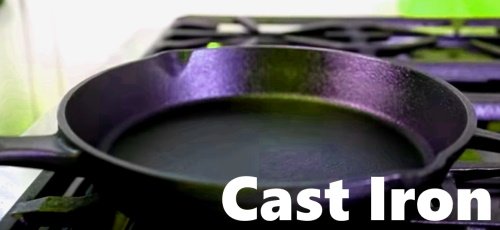
Cast iron is a useful material for making cookware, mechanical parts, forges, anvils, etc., but what are the common techniques used to cut, weld, and shape it?
This article will attempt to cover some of the basics of smithing cast iron.
Cutting Cast Iron
Trying to cut cast iron is pretty hard to do with an oxy-acetylene torch.
With an Oxy-Acetylene Torch
When you’re using a torch, the flame sets fire to the carbon in the cast iron.
This causes the cast iron to melt, which slows the cutting & leaves the edges very rough.
It’s the high amount of carbon contained in cast iron that causes the problem.
The oxy-acetylene cutting process uses the exothermic reaction of turning iron and oxygen into rust.
This happens very slowly at lower temperatures, and very rapidly at the “kindling” temperature of the steel.
The amount of carbon “short circuits” this reaction, just like stainless steel does.
Changing the Chemical Content at the Cut Location
You can try to change the chemical content of the cast iron by adding a gas welding rod, or a bare steel welding rod into the cutting flame.
This should change the chemical content of the cast iron into a high carbon steel in the local area of the cut.
This makes a worse mess, but speeds things up.
Plasma Cutter or Grinder
A plasma cutter will cut cast iron cleanly and quickly.
Also, a 4 1/2″ grinder with a cutting disc works well.
Welding Cast Iron
Cast iron is weldable by most processes.
The key is a good preheat and long post heat, cooling slowly to “room” temperature.
Most welding handbooks should have some information on the subject.
“Blue Max” Welding Rods
Try using a welding rod by the name of “Blue Max” – it’s a high nickel content rod by Crown.
This is the best rod known for this purpose.
Pre-Heating Welding Rods
There is also a special cast iron welding rod that preheats the area then welds, preheats, welds…
The rod is constructed specifically to do this during the welding process.
It was demoed a couple of years ago by a UTECTIC representative.
It is expensive but worked very well.
He welded a cracked 1″ thick sprocket and also added material to the teeth.
There was no initial preheating and no slow cooling.
Welding Cracks in Your Cast Iron Forge
To weld the cracked bottom of a small cast iron rivet forge (about a 2 ft. diameter forge cracked from the center to the OD):
- Grind a “V” into the length of the crack about 1/8″ deep on the bottom of the forge.
- Heat the length of the crack with an oxy-acetylene heating torch. While continuing to heat from the bottom use a stick welder with 309L or 310L stainless (.125 dia.) rod to tack the crack about every four inches.
Then run a bead the length of the crack, then clean the weld. - Continue to heat the area and run a second bead on each side of the first weld, clean again, and then run a final bead on top of the original.
- Quickly place the forge pan in a box half filled with pearlite, then fill the box with more pearlite (a total of about two yards of pearlite)and seal it.
The pan will be hot for several days.
Forging Cast Iron
For all practical purposes, cast iron is not forgeable.
It can be melted down and recast, but will only red short and shatter if forged.
Cast Iron Forging Attempt Video
The following video is a demonstration of what happens when you attempt to forge cast iron.
Notice how the material doesn’t soften and isn’t malleable at all.
It is brittle and only shatters.

